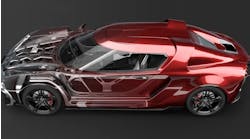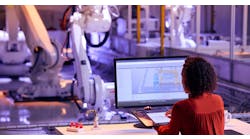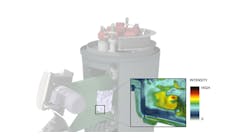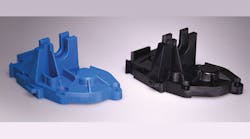Investors and engineers are primarily responsible for the current buzzword in manufacturing technology: “disruptive.” They like to think they’re on the cusp of something big, something that will change the way products are made, and to make you think so, too. Currently, in metalcasting the apparent source of disruption is 3D printing, which is changing the pace and procedure of product design — which in turn is altering the way foundries and diecasters receive and process orders and information.
One obvious assumption may not be entirely relevant: “3D printers can make parts, but the existence of 3D printing is changing what kinds of parts can be made, and where and when we need to make them,” Viridis3D president Will Shambley wrote recently.
Manufacturers and product designers rarely talk about “disruption” in this way, because typically their focus is not upon altering production processes but rather on making them faster, smoother, more flexible, or energy-efficient. For example, casting process simulation has been a breakthrough in metalcasting— but it has not disrupted foundry operations — it optimized pouring, and then by extension coremaking and moldmaking, and ultimately casting design.
Simulation programs are updated on a regular basis, incorporating user experience and optimizing functions accordingly, and introducing new capabilities as computing technologies become more sophisticated. Metalcasters that subscribe to various platforms are upgraded to the latest version, or they subscribe to a new program they identify as an improvement.
Consider: Honda of America’s Anna (OH) Engine Plant diecasts aluminum engine blocks and cylinder heads, and relies on ESI’s ProCast simulation platform to review production procedures before anything is produced. The dies involved in casting such highly detailed products are remarkably complex, which prolongs development time because of the testing necessary to determine the reliability of the production process. The process is expensive too: according to an ESI report, Honda invested almost $50,000 in each production trial.
Using ProCAST, Honda was able to evaluate the die designs, test alternative details, and run processes in a virtual before any tooling was produced. As many other examples have shown, casting process simulation reveals problems like to result from flow and solidification patterns, including critical details like gas and shrinkage porosity. Variations can be tested quickly and inexpensively in the virtual space, resolving problems before they ever really happen.
The advantages are revealed not only in product and process design, but in operations, too. In an example reported by ESI, ferrous castings poured in a copper permanent mold began to reveal evidence of die erosion, increasing scrap rates and downtime to fix the die. ProCAST trials helped to identify the root cause of the die erosion and to define a solution. The result is a better die, a better process, and more productive manufacturing.
But such an example is ripe for “disruption” along the lines proposed by experts in 3DP. Solidscape Inc., a manufacturer of 3D printers for “direct manufacturing,” and LS Research, the developers of a wireless data communication platform called Design Studio, announced what they call a “disruptive” prototyping process that combines high precision printing with moldmaking processes (silicone or metal.) Prototypes can be created in less than two weeks, they noted, compared to five or six weeks needed to create most new plastic or metal parts.
It’s important to note that the ESI/Honda experience involves products manufactured on a larger scale, and production processes already established. Any disruption to be noted is in the prototyping sequence, subordinating simulation’s role.
Unlike any current prototyping process, Solidscape’s printing method is both additive and subtractive. It prints parts at a resolution of 5,000 dpi, and creates wax patterns that do not require hand finishing. LSR’s technology takes that pattern into silicon tooling or cast metal parts that need no hand finishing (as even rapid prototype parts require.)
“With this new disruptive process, users can now go directly from machine to molding, expediting the time it takes to go to market,” claimed Solidscape president Fabio Esposito.
The partners offered a case study involving a wearable consumer electronic product, for which the cost per unit was cut significantly by replacing parts machined from brass with lost-wax castings, the latter produced form Solidscape patterns created directly from digital models. The digital file is directly produces as a finished casting. The results included reduced finishing time, better part tolerances, better “fit” in the final assembly, high consistency for the run of parts, and lower overall cost (from $4,000 to less than $200 per set.)
The new process also increased the time to market, and concedes none of the other advantages gained by process simulation, including the ability to incorporate design changes without tooling or machining revisions.
"We compressed our product development process considerably on a recent program. We’ve gone from weeks of machining time and $4,000 per set of metal parts, to under two days and $200. This was earth shaking for us as well our customer,” according to LSR’s 3D lab manager, Jim Hollister, 3D Lab Manager at LSR.









